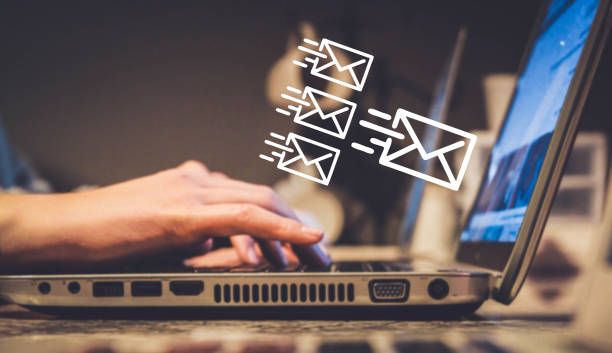In today's digital age, email has become a staple communication tool for individuals and businesses alike. However, there are instances when an email fails to reach its intended recipient, resulting in a delivery failure notification. Understanding the causes of email delivery failures and knowing how to address them is essential for ensuring successful communication and preventing potential issues. In this comprehensive guide, we will delve into the intricacies of email delivery failures, explore common causes, provide troubleshooting techniques, and offer best practices to maximize the effectiveness of your email campaigns.
Understanding Email Delivery Failures
Email delivery failures occur when an email is unable to reach its destination, resulting in a bounce-back notification to the sender. These failures can be classified into two main categories: hard bounces and soft bounces. Hard bounces are permanent delivery failures caused by issues like invalid or non-existent email addresses, while soft bounces are temporary failures that can be caused by factors such as a full mailbox or temporary server issues.
Common Causes of Email Delivery Failures

a. Invalid or Non-existent Email Addresses: One of the most common causes of delivery failures is sending emails to addresses that are invalid or no longer in use. These can occur due to misspellings, outdated contact lists, or changes in recipient email accounts.
b. Full Mailbox: If a recipient's mailbox is full, new emails will be rejected, resulting in a delivery failure. This can happen when the recipient has exceeded their email storage limit or has neglected to manage their inbox.
c. Server Issues: Temporary server issues, such as high volumes of incoming emails or maintenance, can cause delivery failures. In such cases, the email may be retried later automatically.
d. Spam Filters: Overly aggressive spam filters can mistakenly categorize legitimate emails as spam, leading to delivery failures. This can occur if the email content triggers certain spam detection rules or if the sender's domain has a poor reputation.
e. Blacklisting: If the sender's IP address or domain is blacklisted by email service providers or spam monitoring organizations, emails from that sender may be blocked or marked as spam, resulting in delivery failures.
Troubleshooting Techniques for Email Delivery Failures

a. Verify Recipient Email Addresses: Double-check the email addresses of your recipients to ensure they are accurate and up-to-date. Remove any invalid or outdated addresses from your contact list.
b. Check for Errors in Email Content: Review the content of your email for any elements that may trigger spam filters. Avoid using excessive capitalization, too many links, or suspicious attachments. Ensure your email follows best practices for content formatting and language.
c. Monitor Blacklist Status: Regularly monitor the reputation of your sending IP address and domain by using reputable blacklist monitoring tools. If you find your IP or domain has been blacklisted, take appropriate steps to address the issue and request removal from the blacklist.
d. Optimize Sending Practices: Adjust your sending practices to improve email delivery. Consider sending emails in smaller batches instead of bulk sending, as this can help prevent triggering spam filters or overwhelming recipient mail servers.
e. Contact Recipients Directly: In cases where delivery failures persist, consider reaching out to the recipient through alternative channels, such as phone or social media, to verify their email address or provide alternative contact information.
Best Practices to Ensure Successful Email Delivery

a. Maintain a Clean Email List: Regularly clean and update your email list to remove invalid or inactive email addresses. Use double opt-in methods to ensure subscribers provide accurate email addresses and actively engage with your emails.
b. Authenticate Your Emails: Implement email authentication protocols such as SPF (Sender Policy Framework), DKIM (DomainKeys Identified Mail), and DMARC (Domain-based Message Authentication, Reporting, and Conformance) to verify your email's authenticity and improve deliverability.
c. Follow Email Sending Guidelines: Adhere to best practices for email sending, including avoiding spammy language, providing clear unsubscribe options, and honoring recipient preferences. Respect anti-spam regulations, such as the CAN-SPAM Act, to maintain a positive sender reputation.
d. Monitor and Analyze Email Metrics: Regularly monitor key email metrics, such as bounce rates, open rates, and click-through rates, to identify trends and patterns. Analyzing these metrics can help you identify delivery issues and optimize your email campaigns for better performance.
e. Build Relationships with ISPs and ESPs: Establish relationships with Internet Service Providers (ISPs) and Email Service Providers (ESPs) to ensure your emails receive favorable treatment. Engage in whitelist programs and proactively communicate with these entities to resolve any potential deliverability issues.
Commonly Asked Questions
Q1: How can I prevent my emails from being marked as spam?
A1: To prevent your emails from being marked as spam, follow best practices such as avoiding spam-triggering language, providing a clear unsubscribe option, and respecting recipient preferences. Authenticate your emails using SPF, DKIM, and DMARC, and regularly monitor your sending reputation.
Q2: What should I do if my email is bouncing back?
A2: If your email is bouncing back, review the bounce-back message for specific details about the failure. Check for typos or incorrect email addresses, ensure your recipient's mailbox is not full, and verify that your sending IP or domain is not blacklisted. Take appropriate actions based on the specific bounce-back error.
Q3: Can I retry sending an email that previously failed?
A3: In the case of a soft bounce, where the failure is temporary, you can attempt to resend the email after some time. However, for hard bounces caused by invalid or non-existent email addresses, it's best to remove them from your contact list and avoid sending to them in the future.
Q4: Why am I still receiving delivery failure notifications even after taking corrective actions?
A4: Sometimes, delivery failure notifications may continue to arrive due to delayed notifications or cached DNS records. Allow sufficient time for changes to propagate and for notifications to cease. If the issue persists, contact your email service provider for further assistance.
Q5: How can I improve email deliverability in the long term?
A5: To improve email deliverability in the long term, focus on building a healthy email list, following best practices for email content and sending, and maintaining a positive sender reputation. Regularly monitor email metrics and adapt your strategies based on insights gained from analysis.
Conclusion
Email delivery failures can be frustrating, but with a comprehensive understanding of their causes and effective solutions, you can overcome these challenges and ensure successful email communication. By implementing best practices, regularly monitoring email metrics, and taking appropriate troubleshooting actions, you can maximize the deliverability of your emails and enhance the effectiveness of your campaigns. Embrace these strategies, build strong sender reputations, and unlock the full potential of your email communications.

